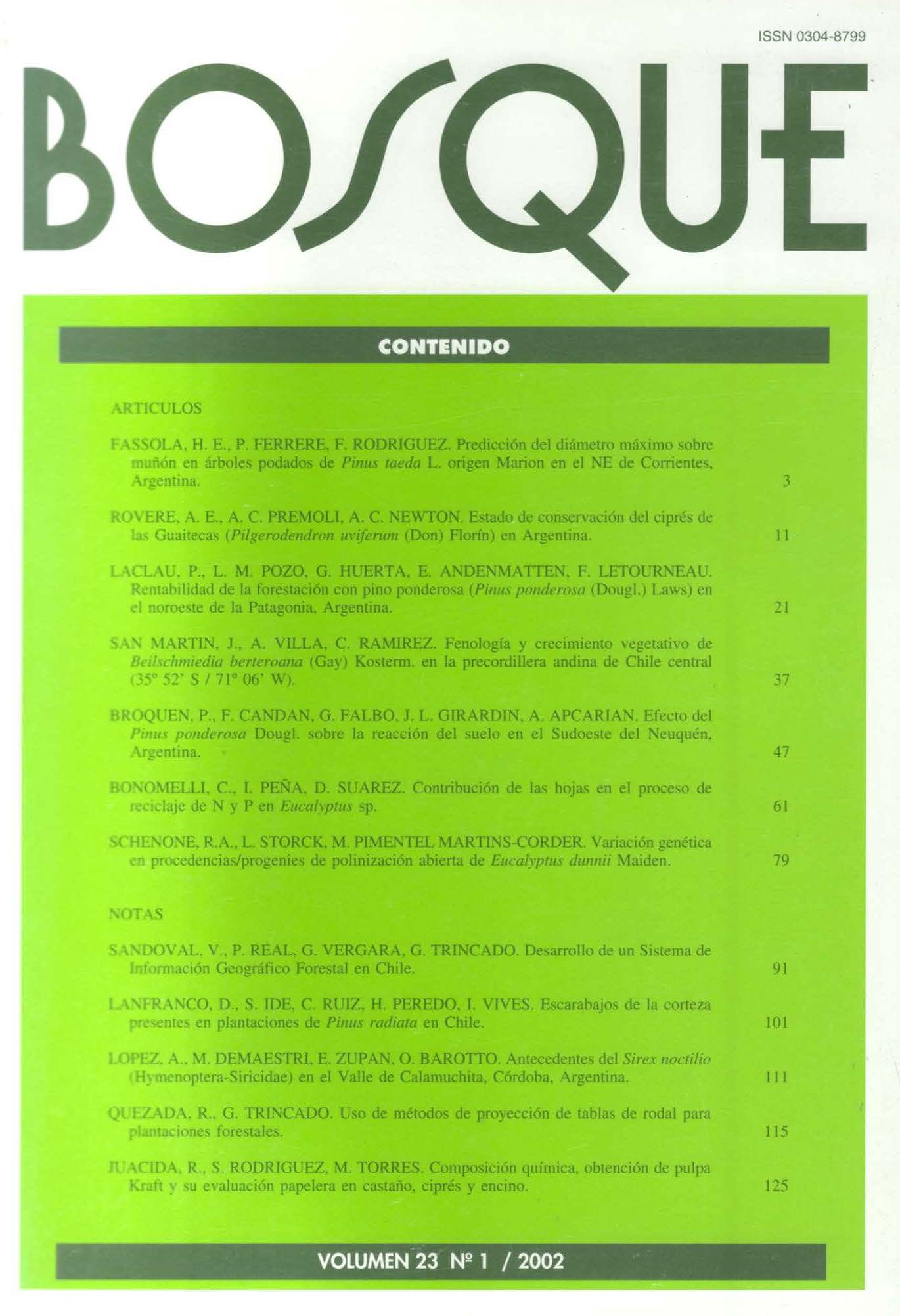Phenology and vegetative growth of Beilschmiedia berteroana (Gay) Kosterm. in the Andean Cordillera of central Chile (35° 52 ' S / 71° 06 ' W)
Main Article Content
Abstract
Vegetative growth and the reproductive phase of five adult trees of Beilschmiedia berteroana (Gay) Kosterm. (Lauraceae) were studied for a year in the Hornillos ravine, located on a western hillside in the Sub-Andean sector (35°52'S and 71°06'W) in the province of Linares (VII Region, Chile). The species is evergreen, endemic and currently declared officially endangered. The growth and flowering pattern are adapted to mesic climatic conditions and concentrated in the period of spring-summer. Vegetative growth begins at the end of winter, is maintained during spring and ends at the beginning of summer. A little later, and associated with the vegetative growth, is the flowering phase, which is principally concentrated in the months of October, November and December. Fructification begins at the end of vegetative growth. Both phenophases are influenced by exposure to radiation, and the release, dispersion and maturity of the fruits occurs around the end of summer. The duration of the flowers and fruits in the tree is influenced by local microclimatic conditions, and the duration of the leaves is three or four years.

